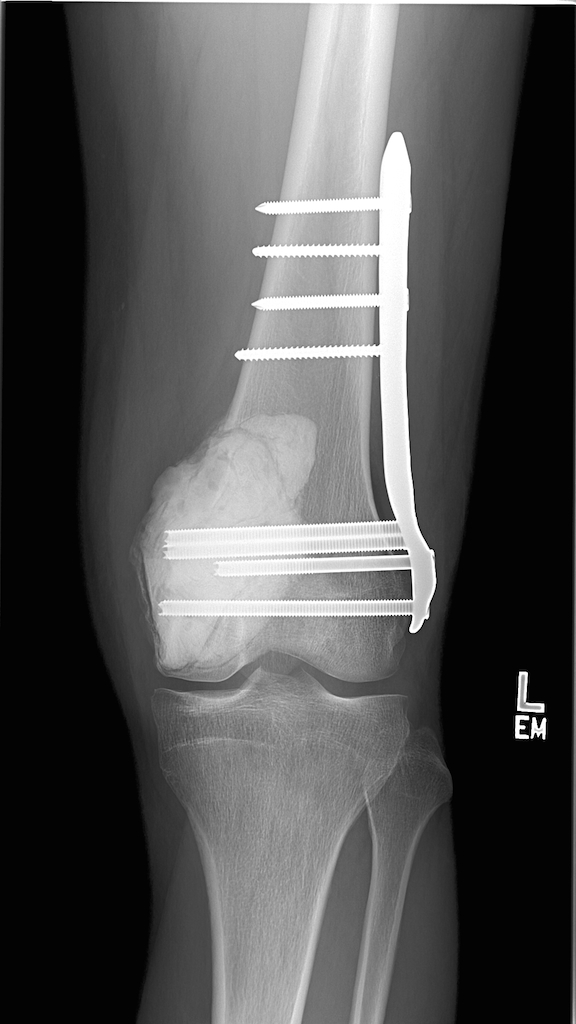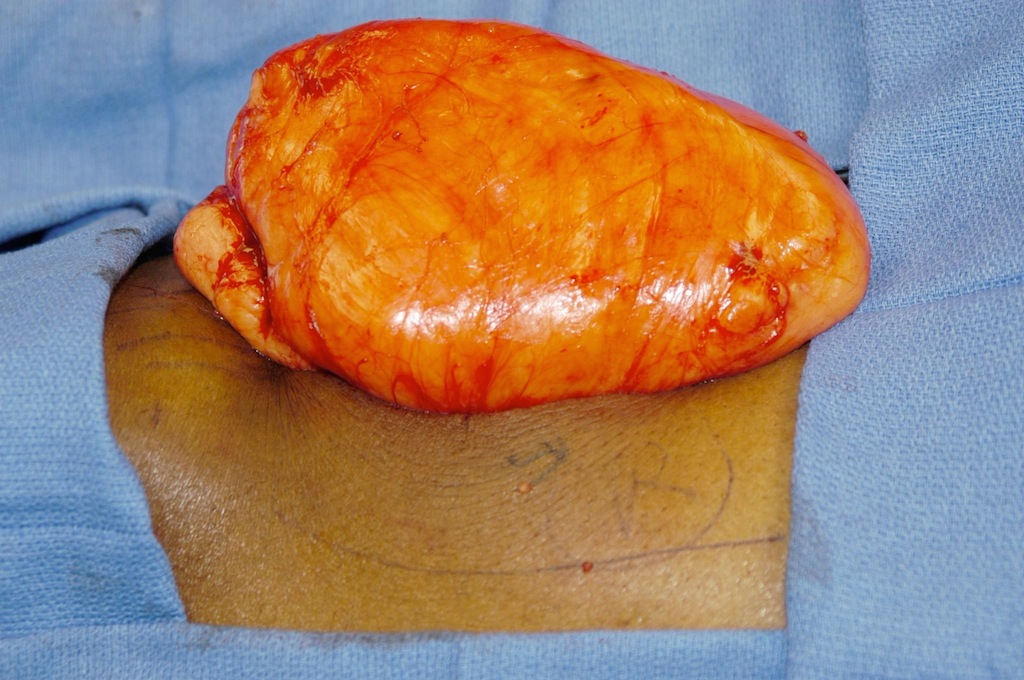Benign Bone Tumor Surgery
Not all benign bone tumors require surgery. Many benign tumors grow very slowly or not at all, and can simply be observed.
For benign bone tumors that require surgery,, those which cause pain or damage to tissues, surgery is needed. In these cases, a “curettage-resection” is performed. This is were the bone is left intact, while the tumor is removed from inside the bone using manual "curettage" and sometimes power instruments.
For more aggressive benign tumors, meaning those tumors more likely to come back (“recur”) after surgery, further treatment is provided by applying alcohol to the bone cavity after removing the tumor. This kills more tumor cells but needs to be done carefully so it does not damage other tissues.
Bone Reconstruction
Once the tumor is removed, the hole in the bone is filled using various techniques. For small defects, one of various "bone graft substitutes" is often all that is necessary. These are man-made compounds containing protein and calcium which are eventually converted to bone inside the patient.
In some cases, bone "cement", actually a plastic polymer, is used. If the hole is large enough to significantly weaken the bone, metal rods, plates & screws may be added. Newer “locking” plates, adapted from orthopedic trauma surgery, allow for a significantly stronger reconstruction and allow for removal of large tumors while still preserving joint function.
Benign Soft Tissue Tumor Surgery
As with benign bone tumors, not all benign soft tissue tumors require surgery. For example, a small fatty tumor ("lipoma") or an asymptomatic benign nerve tumor ("schwanomma") can simply be observed.
Similarly, biopsy is not always required for soft tissue tumors. Sometimes the location of the mass and its appearance on MRI scans, can accurately predict the diagnosis.
When surgery is indicated for benign tumors, only the tumor itself is removed, no additional tissue or muscle needs to be removed.
Benign soft tissue tumors can be slow growing, with low chance for recurrence. Lipomas and schwanommas are examples of such tumors. Other benign soft tissue tumors tend to be more aggressive, with higher chance for coming back after surgery ("recurrence"). Examples of aggressive benign tumors would include fibromatosis or pigmented villonodular synovitis (PVNS). For these conditions, regular follow-up MRI imaging is performed for several years after surgery.












